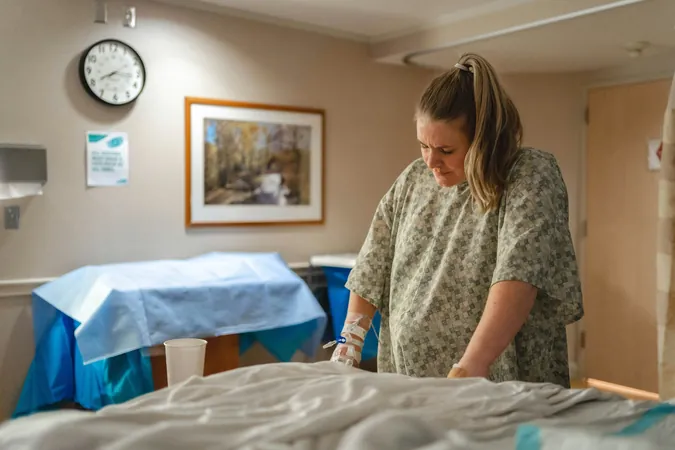
Public Hospitals Promote Vaginal Births Over C-Sections: Shocking Study Findings!
2025-01-29
Author: Mei
Groundbreaking Study Reveals Hospital Birth Trends
A groundbreaking new study has revealed that women birthing in public hospitals are significantly more likely to experience spontaneous vaginal deliveries than those in private facilities, where cesarean sections are notably more prevalent. This research, published in the esteemed journal BMJ Open, was conducted by experts from Western Sydney University in collaboration with leading medical institutions in the Netherlands and the United Kingdom.
Study Overview and Methodology
The study analyzed an extensive dataset comprising over 172,000 low-risk women in New South Wales, Australia, over a 15-year span from 2001 to 2016. Focusing on first-time mothers, researchers sought to understand how a woman's first birth method influences subsequent pregnancies. While the study offers a comprehensive overview of birth patterns, it does not delve into specific clinical reasons that may affect individual birth choices.
Key Findings of the Research
Stunning findings emerged from the research: Among women who had two births, 55.8% in public hospitals achieved a vaginal birth, in stark contrast to only 36.8% in private hospitals. Additionally, for women with three births, a remarkable 57.2% of those in public hospitals experienced three consecutive vaginal births, compared to just 38.8% in private care.
Expert Insights on Maternity Care
Professor Hannah Dahlen, a co-author of the study from the School of Nursing and Midwifery at Western Sydney University, emphasized the critical differences between public and private hospital environments. "Our research highlights the need to empower women to have vaginal births, as this significantly influences their future childbirth experiences," she stated.
Chances of Repeating Birth Experiences
The data showed that women who had an initial spontaneous vaginal birth had a staggering 91.3% chance of repeating the experience in subsequent pregnancies, regardless of hospital type. Conversely, those who underwent an elective cesarean section had an 81.9% likelihood of having subsequent elective cesareans, with the chances being particularly elevated in private hospitals (84.9%) compared to public ones (76.9%).
Disparities in Maternity Care
Dr. Lilian Peters, the lead author and Clinical Epidemiologist from the University Medical Center Groningen, remarked on the striking disparities based on maternity care funding models. "Women considered low-risk but managed by private obstetricians are more susceptible to interventions during childbirth compared to those in the public health system," she noted.
Implications for Healthcare Policy
The implications of this research extend beyond academic interest. It encourages healthcare professionals and policymakers to reconsider the frameworks of maternity care, advocating for informed birth choices that could positively impact maternal and family health outcomes in the long run.
Conclusion: Shaping Maternal Health Narratives
This study reiterates the importance of understanding how birth experiences shape women's reproductive trajectories, prompting a new narrative in maternal health that will resonate across generations. As maternal care evolves, it is essential to keep in mind how each birth contributes to the ongoing journey of motherhood.


 Brasil (PT)
Brasil (PT)
 Canada (EN)
Canada (EN)
 Chile (ES)
Chile (ES)
 Česko (CS)
Česko (CS)
 대한민국 (KO)
대한민국 (KO)
 España (ES)
España (ES)
 France (FR)
France (FR)
 Hong Kong (EN)
Hong Kong (EN)
 Italia (IT)
Italia (IT)
 日本 (JA)
日本 (JA)
 Magyarország (HU)
Magyarország (HU)
 Norge (NO)
Norge (NO)
 Polska (PL)
Polska (PL)
 Schweiz (DE)
Schweiz (DE)
 Singapore (EN)
Singapore (EN)
 Sverige (SV)
Sverige (SV)
 Suomi (FI)
Suomi (FI)
 Türkiye (TR)
Türkiye (TR)